Search Images
Browse Content (p. 1198)
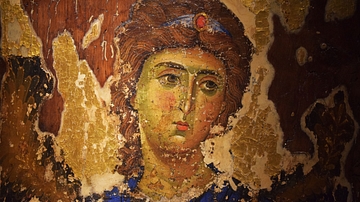
Image
Archangel Michael
This exquisite fragment depicts the Archangel Michael. It was painted on wood and with tempera at Matskhvarishi Church, which is located in Upper Svaneti in western Georgia. It dates from the 12-13th century CE, and it denotes strong artistic...
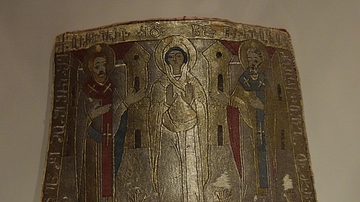
Image
Georgian Liturgical Cuff with Mary and Saints
This Georgian liturgical cuff dates from 1648 CE and is called "epimanikia" in Greek. It is the liturgical vestment of the Eastern Orthodox Church and Eastern Catholic Churches. They are typically made of flax, silk fabric, gold and silk...
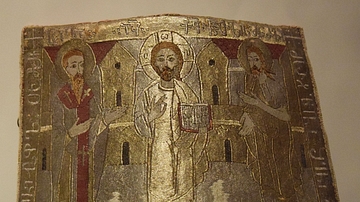
Image
Georgian Liturgical Cuff with Jesus and Saints
This Georgian liturgical cuff dates from 1648 CE and is called "epimanikia" in Greek. It is the liturgical vestments of the Eastern Orthodox Church and Eastern Catholic Churches. They are typically made of flax, silk fabric, gold and silk...
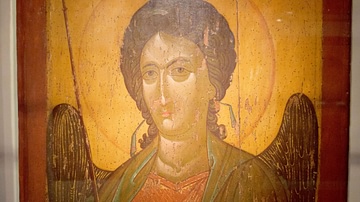
Image
Archangel Gabriel from Great Deesis
This painting comes from Ubisi, Imereti (West Georgia) and depicts Archangel Gabriel. It dates from the 14th century CE, and it is made of wood and tempera. One can clearly see the strong Byzantine artistic influence exerted in this painting...
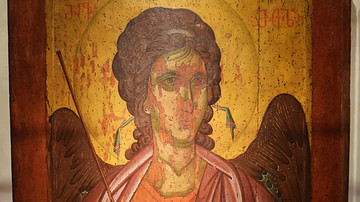
Image
Georgian Archangel Michael Painting
This painting of Archangel Michael was executed in the early 14th century CE in Ubisi, Imereti (West Georgia) on wood and with tempera. One can clearly see the strong Byzantine influence in this painting. (Georgian National Museum, Tbilisi)
![Battle of Abritus [Artist's Impression]](https://www.worldhistory.org/img/c/p/360x202/7761.jpg?v=1599498902)
Image
Battle of Abritus [Artist's Impression]
An artist's impression of the Battle of Abritus, (251 CE), as depicted in the PC game Rome II: Total War - Empire Divided.
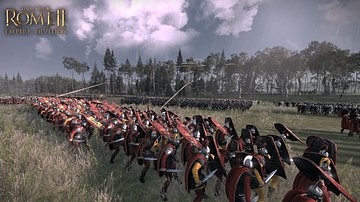
Image
Roman Legions, Battle of Abritus
An artist's impression of the battle of Abritus, (251 CE), as depicted in the PC game Rome II: Total War - Empire Divided.
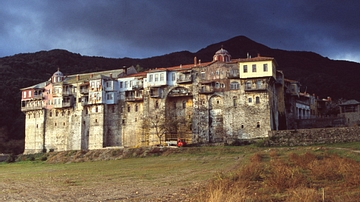
Image
Iviron Monastery, Mount Athos
The Byzantine Iviron monastery on Mount Athos, northern Greece. Founded in the late 10th century CE.
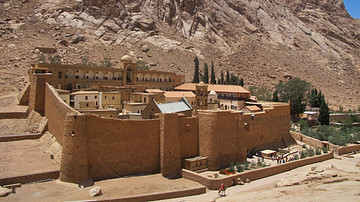
Image
St. Catherine's Monastery, Sinai
St. Catherine's monastery, Mount Sinai, Egypt. It was founded by Justinian I in the mid-6th century CE.
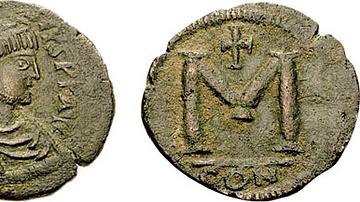
Image
Copper Follis of Anastasios I
A Byzantine copper coin, the follis, from the reign of Anastasios I, 491-518 CE. (Classical Numismatic Group, Inc. http://www.cngcoins.com)